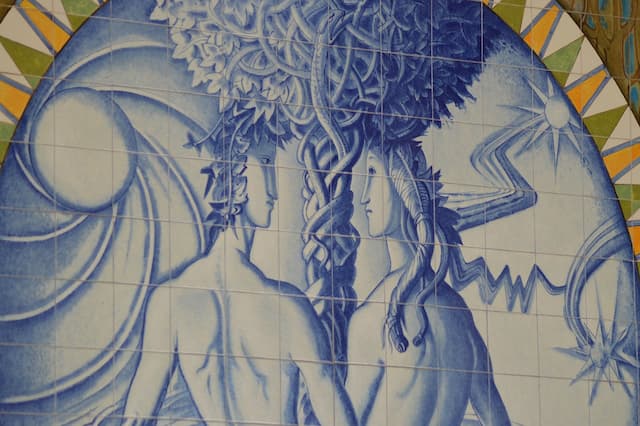Of Pocket Notebooks and Jonathan Edwards
By Elizabeth Prata
It all started with this pocket notebook I found at a thrift store:

When I’m out and about, and the Holy Spirit connects something I’m doing or seeing to a previous biblical thought, I need to capture it. My mind’s thoughts are increasingly ephemeral, fleeting, mist-like. So I need a notebook around me to write down the connections I’m formulating. The little but pretty notebook got me thinking about pocket notebooks, thoughts, and on-the-go connections my mind might be knitting.
And Jonathan Edwards (1703-1758).
“As minister, theologian, and missionary, Edwards has exercised profound influence not only on the thought, culture, and literary life of his own time but on American society to the present. He is a window into a critical period in American history and was a shaper of spiritual life in America.” Source Boston U, History of Missiology
Edwards was also frugal to the extreme, a difficult husband, and a quirky character.

For example:
“Upon returning home from riding over the countryside or walking in the fields for recreation, he had to be unpinned; that is, scraps of paper (either brief notes or mere mnemonic blank slips significant for their position only) had to be removed from sleeve and skirt before his coat could be taken away and hung up.” Source: The Material and Social Practices of Intellectual Work: Jonathan Edwards’s Study
That’s a vivid picture, isn’t it?
The article was interesting. It discussed the concrete items around Edwards’ writing life such as his study, table, desk, writing implements etc., and the intersection of how those items impacted his thought life and writing life.
Jonathan Edward pursued a life of the mind, and in the 1700s, having a study was a new idea. Having paper, desk, table, chair, quill pens, books were also new and difficult to come by. If you wanted to write, you have to find feather to make a quill pen, make the ink, build the table, buy the paper (usually from London). Having an extra room in the house to study in was not normally available.

Edwards himself said that he processed his thoughts by writing them down. “My method of study, from my first beginning the work of the ministry, has been very much by writing…The longer I prosecuted my studies in this method, the more habitual it became, and the more pleasant and profitable I found it. The further I traveled in this way, the more and wider the field opened, which has occasioned my laying out many things, in my mind, to do in this manner…” Source, Jonathan Edwards to the Trustees of the College of New Jersey, Oct. 19, 1757, in The Works of Jonathan Edwards, vol. 16, Letters and Personal Writings.
Edwards was an avid studier of creation, and often took long horseback rides as he pondered the Creator. In an age of scarce paper or only handmade notebooks, this is why Edwards had to be ‘unpinned’ when he returned home. He eventually developed a system of cataloging his writings, but his miserly approach to paper was such that he also used the backs of others’ letters to him, margins, scraps, the wrapping paper that his purchased bundles of paper came in, and more.
Christians from all walks who deeply study the word often enjoy looking at others’ libraries or studies. We peer at photos posted on social media, everything from a room to a nook in the kitchen. We like seeing the books on shelves, Bibles with notes (or not?), notebooks and journals, pens (fountain or ballpoint?). We discuss bullet journals, size and type of journal, what we write and how.
Bible studiers are thinkers.

Finally, brothers and sisters, whatever is true, whatever is honorable, whatever is right, whatever is pure, whatever is lovely, whatever is commendable, if there is any excellence and if anything worthy of praise, think about these things. (Philippians 4:8).
Jesus frequently asked the disciples “What do you think?” Look it up, He constantly asked this. He often provoked them to think more deeply, better, more.
In Edwards’s study we can see the material world of an eighteenth-century intellectual through the means by which he forged and communicated ideas. We can also see the product of his labors—his writing—from a new perspective. The books on the shelf, borrowed and lent; the pens, paper, and ink; the homemade notebooks and hand-stitched manuscripts; and even the custom-made furniture where Edwards sat for those long hours all helped shape the texts Edwards left behind… (Source)
How DO our material objects for study help us formulate, retain and recover ideas? Edwards in later life modified his study table into a six-sided rotating desk where books could be propped up and he would not have to get up from his chair. This was because he often spent 13 hours a day in his study.

Streamlining his study patterns was important. He developed a system of cataloguing, a method of study that allows free thinking without hindrance in his thought life, and more importantly allowed him to put his hands on subjects previously written at any moment when he needed it.
I enjoyed the article The Material and Social Practices of Intellectual Work: Jonathan Edwards’s Study so much. I have always been a scribbler of notes, ideas, thoughts. When I was 8 or 10, I used index cards and posted them on a corkboard above my desk in my bedroom. Later I used a small journal. I have a pocket notebook in my purse, a note pad in my car, and many journals at home.
I spend the bulk of my time in my apartment at the table, reading, writing, and surfing the internet, which doubles as entertainment with my various streaming services. Therefore, the dining table doubles as a desk, and this area in the kitchen as an office. But how not to have clutter? How to have everything handy, within arm’s reach? I do not want it to look messy but I want it to be functional.
If you think about all the accouterments one might desire to have in a viable office or study, it’s a lot. I have within reach or nearby:
Printer
Scanner
Personal Laminator
printer paper
notebooks
reference books
Bibles
notepads
prayer journal
books I’m reading now
Pens, scissors, paper clips
Post-its
Post-it Arrow Tabs
Tissues
Table fan
coaster for water/tea/coffee
Lamp (good light is a must!)


Behind the laptop I’ve got my Bible & books I’m reading now, pamphlets to the left. Under the bookcase in trays there are smaller pieces of paper, post its, and eyedrops for when my eyes get dry. Tissues, and the pen cup has all my writing implements. Draped over the chair is a blanket for when I get cold or need to roll it up to put behind my lower back. Coaster for coffee mug or teacup. Flowers because I love looking at flowers.
Scholars of Edwards are fortunate that so much of the customized apparatus that made up his study has survived, since all the houses he called home have been destroyed and there are thus few remaining material “relics” of his working life to contextualize his writings. … his literary organization and output, as reflected in the design, fabrication, and use of his desk, tables, bookcases, and other pieces he assembled as his center of operations, enabled him to realize his youthful social aspiration of becoming a participant in the international exchange of scientific and religious thought and winning a place in the transatlantic republic of letters. Source
Though few of us can equal or even approach Edwards in higher level thought or literary output, we all can make modifications to the accouterments we use in our Bible study that help streamline the thought process. The choice of pens, papers, notebooks, desk or tables, etc. aren’t “extras” but important tools that aid us in our study of God, His written word, and of our capturing these concepts for absorption into our soul.



